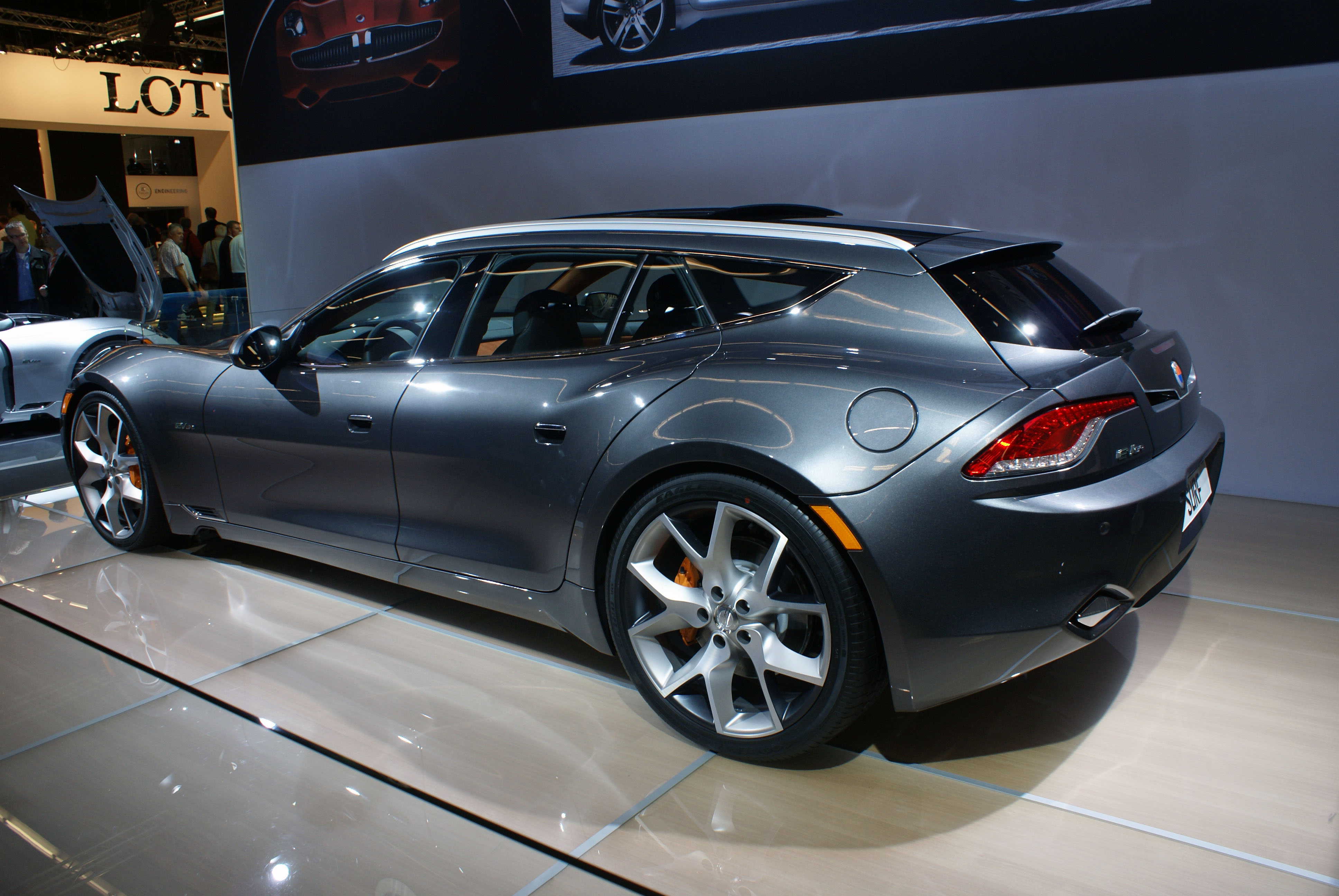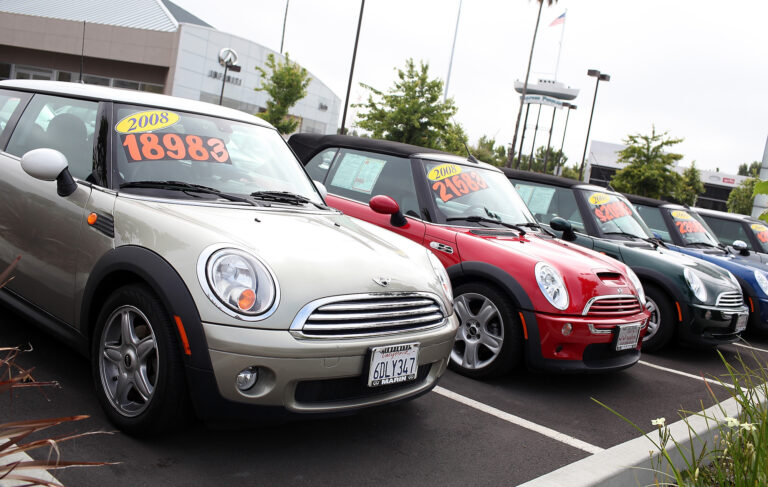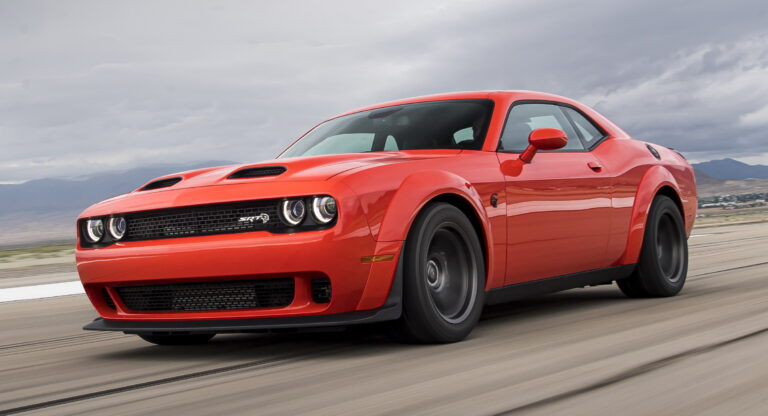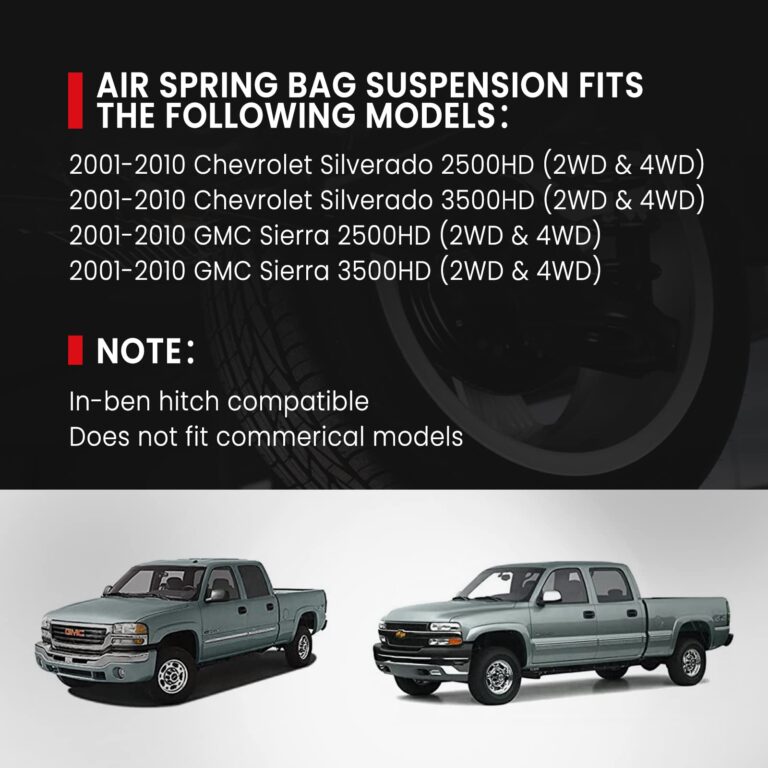Fisker Car Brand: A Deep Dive into Sustainable Electric Mobility
Fisker Car Brand: A Deep Dive into Sustainable Electric Mobility cars.truckstrend.com
In the rapidly evolving landscape of automotive innovation, few names evoke as much discussion, anticipation, and occasional trepidation as Fisker. More than just a car manufacturer, Fisker Inc., founded by the visionary designer Henrik Fisker, represents a bold and ambitious endeavor to redefine sustainable electric mobility. Born from a blend of artistic design, cutting-edge technology, and an unwavering commitment to environmental responsibility, Fisker aims to carve out a unique niche in the competitive electric vehicle (EV) market. This article serves as a comprehensive guide to the Fisker Car Brand, exploring its origins, core philosophies, product offerings, ownership experience, and the path it navigates in pursuit of a greener future.
The Genesis of Fisker: A Visionary’s Journey
Fisker Car Brand: A Deep Dive into Sustainable Electric Mobility
The story of Fisker is one of resilience and reinvention. Its roots trace back to Fisker Automotive, founded in 2007, which famously launched the Fisker Karma, a luxurious plug-in hybrid electric vehicle. While celebrated for its striking design, Fisker Automotive ultimately faced financial difficulties and declared bankruptcy in 2013.
However, Henrik Fisker’s vision for sustainable mobility never waned. In 2016, he re-emerged with Fisker Inc., a new company built on the lessons learned and a renewed focus on pure electric vehicles. This rebirth marked a significant shift, emphasizing a lean, asset-light business model, leveraging external manufacturing partners, and prioritizing software-defined vehicles with a strong emphasis on sustainability from conception to production. The core philosophy of Fisker Inc. revolves around creating emotionally engaging, beautifully designed electric vehicles that are also accessible and environmentally conscious, aiming to deliver "the world’s most sustainable vehicles."
Core Pillars of the Fisker Brand
Fisker Inc. differentiates itself through several foundational principles that guide its design, engineering, and business strategy:
1. Uncompromising Sustainability & Circular Economy
At the heart of the Fisker brand is a profound commitment to sustainability. This goes beyond zero-emission tailpipes. Fisker vehicles incorporate recycled materials extensively, from interior textiles made from reclaimed fishing nets and plastic bottles to rubber compounds and even recycled carbon fiber. The Fisker Ocean, for instance, boasts over 50 kg (110 lbs) of recycled and bio-based materials. The company also aims for a circular economy approach, designing vehicles for longevity and future recyclability, and even exploring solutions for vehicle end-of-life. The optional SolarSky roof on the Ocean further exemplifies this commitment, providing supplementary solar charging to extend range.
2. Iconic Design Language
Henrik Fisker’s reputation as a renowned automotive designer (responsible for iconic cars like the BMW Z8 and Aston Martin DB9) is evident in every Fisker vehicle. The brand’s design language is characterized by sleek lines, aerodynamic profiles, and a futuristic aesthetic that balances elegance with functionality. Fisker vehicles are designed to be instantly recognizable, creating an emotional connection with owners while optimizing for efficiency and spacious interiors.

3. Advanced Technology and Software Integration
Fisker embraces cutting-edge technology, not just in its electric powertrains but also in its user experience. Vehicles are designed with advanced driver-assistance systems (ADAS), intuitive infotainment screens, and robust connectivity features. A significant focus is placed on over-the-air (OTA) software updates, allowing vehicles to improve over time, receive new features, and address potential issues remotely, much like a smartphone. This ensures the ownership experience remains fresh and relevant.
4. Flexible Manufacturing and Evolving Sales Model
Initially, Fisker adopted an asset-light model, partnering with established manufacturers like Magna Steyr in Austria for production of the Ocean. This strategy was intended to reduce capital expenditure and accelerate time to market. Similarly, Fisker initially pursued a direct-to-consumer sales model, aiming to streamline the purchasing process and foster a direct relationship with customers. However, in response to market dynamics and the need for broader reach and service infrastructure, Fisker has recently begun integrating traditional dealer partnerships, signaling an adaptive approach to its business strategy.
Fisker’s Product Lineup: The Ocean, and Beyond

Fisker’s current and future product portfolio showcases a diverse range of electric vehicles designed to cater to different segments and needs:
1. The Fisker Ocean (Currently in Production)
The Fisker Ocean is the brand’s flagship model, a fully electric SUV designed for both performance and practicality.
- Overview: A five-passenger, all-electric SUV that blends sustainability, design, and technology. It’s built on a flexible platform, making it adaptable for various configurations.
- Key Features:
- SolarSky Roof: An optional full-length solar roof that can generate supplemental power, potentially adding thousands of miles of range annually under optimal conditions.
- California Mode: A unique feature that, with the touch of a button, simultaneously opens all windows and the sunroof (including the rear quarter windows), creating an open-air driving experience reminiscent of a convertible.
- Rotating Revolve® Screen: A central infotainment touchscreen that can rotate from a portrait to a landscape orientation for different uses, such as watching videos when parked.
- Sustainable Materials: Extensive use of recycled and vegan materials throughout the interior.
- Performance: Available in various trims with different power outputs and ranges, including dual-motor all-wheel-drive configurations.
- Trims:
- Ocean Sport: The entry-level, front-wheel-drive model, offering a respectable range and core Fisker features.
- Ocean Ultra: A mid-tier, all-wheel-drive model with increased power and range, bridging the gap to the top trim.
- Ocean Extreme: The top-of-the-line, all-wheel-drive model, boasting the longest range, highest performance, and most premium features, including the SolarSky roof as standard.

2. The Fisker Pear (Future Urban Mobility)
The Pear (Personal Electric Automotive Revolution) is Fisker’s vision for an affordable, compact urban EV.
- Concept: Designed for city dwellers, offering practicality, innovative storage solutions, and a focus on minimalist design. It aims to be a high-volume, disruptive entry into the compact EV segment.
- Unique Features: Expected to include a "Houdini trunk" (a compact, multi-functional rear cargo area that retracts inward, eliminating the need for a traditional liftgate in tight spaces) and a "Limo Mode" for enhanced rear passenger comfort.
3. The Fisker Alaska (Electric Pickup Truck)
The Alaska is Fisker’s foray into the booming electric pickup truck market.
- Concept: A versatile, full-sized electric pickup designed to offer robust performance and utility while maintaining Fisker’s commitment to sustainability and innovative design.
- Potential Features: Expected to feature an expandable bed, potentially leveraging some of the Pear’s innovative storage solutions for enhanced cargo flexibility.
4. The Fisker Ronin (High-Performance GT)
The Ronin is Fisker’s halo car, a high-performance, ultra-luxury four-door GT convertible.
- Concept: A limited-production, exclusive vehicle designed to showcase Fisker’s engineering prowess and design capabilities, pushing the boundaries of electric vehicle performance and luxury.
- Target: Aims for exceptional range and blistering acceleration, targeting the ultra-premium segment of the EV market.
Driving a Fisker: Experience and Considerations
For prospective owners, understanding the Fisker experience involves several key aspects:
Performance and Range
Fisker vehicles, particularly the Ocean, offer compelling performance figures, with quick acceleration thanks to instant electric torque. Range varies by trim, but the Ocean Extreme provides a competitive EPA-estimated range, addressing common range anxiety concerns for most daily driving and longer trips.
Charging Infrastructure
Fisker vehicles utilize standard charging ports (CCS in North America, Type 2 in Europe), making them compatible with vast public charging networks. The company has also forged partnerships, such as with Electrify America, to provide charging benefits to its customers. Home charging, typically with a Level 2 charger, is the most convenient option for daily top-ups.
Software and User Experience
The in-car technology, particularly the large central screen and the intuitive user interface, is a cornerstone of the Fisker experience. Regular OTA updates promise continuous improvement and new features, keeping the vehicle modern and adaptable.
Ownership and Service Network
Being a relatively new brand with an evolving sales model, the service and support network has been a critical area of development for Fisker. Initially relying on mobile service and select service centers, the transition to dealer partnerships aims to significantly expand the physical footprint for maintenance, repairs, and customer support, which is crucial for building consumer confidence and loyalty. Potential buyers should inquire about the service options available in their specific region.
Challenges and the Path Forward
Fisker’s journey, while ambitious, has not been without its hurdles. Like many EV startups, it has faced:
- Production Ramp-up: Scaling production of a complex vehicle like the Ocean has presented challenges, including initial delivery delays and quality control adjustments.
- Financial Scrutiny: As a publicly traded company, Fisker is under constant financial scrutiny, with market sentiment influenced by production numbers, delivery targets, and capital requirements.
- Intense Competition: The EV market is crowded with established automakers and numerous startups, requiring Fisker to constantly innovate and execute flawlessly to stand out.
- Building a Service Network: Establishing a robust and widespread service infrastructure is vital for customer satisfaction and brand reputation, a significant undertaking for any new OEM.
To address these challenges, Fisker has shown adaptability, particularly with its shift towards dealer partnerships to accelerate market penetration and strengthen its service backbone. Strategic collaborations and a continued focus on innovation and efficiency will be key to its long-term success.
Practical Advice and Actionable Insights
For anyone considering a Fisker vehicle or tracking the brand’s trajectory, here’s some practical advice:
- Do Your Research: Understand the specific features and benefits of each Fisker model and trim level that aligns with your needs and budget.
- Monitor Service Availability: If you’re considering a purchase, verify the current service and support options in your local area. The evolving dealer network means coverage will expand.
- Stay Informed on Software Updates: Fisker’s commitment to OTA updates means the vehicle experience can improve over time. Keep an eye on announcements regarding new features and enhancements.
- Consider the Long-Term Vision: Fisker is a brand with a strong mission. If you align with its sustainability goals and innovative approach, it could be a rewarding ownership experience. Be prepared for the dynamic nature of a growing brand.
- Evaluate Total Cost of Ownership: Beyond the purchase price, factor in potential charging costs, maintenance, and insurance. EVs generally have lower running costs.
Fisker Car Brand: Price Table (Starting Estimates)
Please note: Prices are starting MSRP in USD and are subject to change. Range estimates are based on EPA figures where available, otherwise manufacturer targets. Specific features may vary by region and trim. Availability of future models (Pear, Alaska, Ronin) is pending.
| Model | Trim/Variant | Starting Price (USD) | Estimated Range (EPA) | Key Feature/Highlight | Availability |
|---|---|---|---|---|---|
| Fisker Ocean | Sport | ~$38,999 | ~231 miles | Front-Wheel Drive, Sustainable Materials, Digital Cockpit | Currently Delivering |
| Ultra | ~$52,999 | ~360 miles | All-Wheel Drive, Smart Traction, California Mode | Currently Delivering | |
| Extreme | ~$61,499 | ~360 miles | All-Wheel Drive, SolarSky Roof, Hyper Range, Park My Car | Currently Delivering | |
| Fisker Pear | (Standard) | ~$29,900 | ~180-300 miles (target) | Urban Mobility, Houdini Trunk, Minimalist Design | Pre-orders Open (Future) |
| Fisker Alaska | (Standard) | ~$45,400 | ~230-340 miles (target) | Electric Pickup, Expandable Bed, Versatile Utility | Pre-orders Open (Future) |
| Fisker Ronin | (Standard) | ~$385,000 | ~600 miles (target) | Ultra-Luxury GT Convertible, High Performance, 3 Motors | Pre-orders Open (Future) |
Note: The Fisker Ocean Extreme and Ultra both have an estimated range of 360 miles as per Fisker’s recent updates, depending on conditions and specific configurations.
Frequently Asked Questions (FAQ)
Q1: What is Fisker Inc.?
A1: Fisker Inc. is an American electric vehicle manufacturer founded by Henrik Fisker, focused on designing and developing sustainable, technologically advanced electric vehicles.
Q2: Where are Fisker vehicles manufactured?
A2: The Fisker Ocean is primarily manufactured by Magna Steyr, a contract manufacturer, in Graz, Austria. Future models may be produced at different facilities.
Q3: What is "California Mode" in the Fisker Ocean?
A3: California Mode is a unique feature that, with a single button press, simultaneously opens all windows, the sunroof, and the rear quarter windows, creating an open-air driving experience.
Q4: What is the estimated range of the Fisker Ocean Extreme?
A4: The Fisker Ocean Extreme has an EPA-estimated range of approximately 360 miles, depending on driving conditions and specific configurations.
Q5: How do I charge a Fisker vehicle?
A5: Fisker vehicles are compatible with standard EV charging infrastructure. They can be charged at home using a Level 2 charger or at public fast-charging stations (DC fast chargers) via the CCS connector (in North America).
Q6: What are Fisker’s future models beyond the Ocean?
A6: Fisker has announced plans for the Fisker Pear (a compact urban EV), the Fisker Alaska (an electric pickup truck), and the Fisker Ronin (a high-performance luxury GT convertible).
Q7: What is Fisker’s sales and service model?
A7: Fisker initially pursued a direct-to-consumer sales model but is now transitioning to a hybrid approach, incorporating traditional dealer partnerships to expand its sales and service network.
Q8: Is Fisker a reliable brand, given its newness?
A8: As a relatively new automotive brand, Fisker is in the process of scaling production and establishing its service network. Like any new company, it has faced initial challenges. However, its commitment to software updates and expanding service options aims to enhance reliability and customer satisfaction over time. Prospective buyers should research the latest updates on production and service in their region.
Conclusion
The Fisker Car Brand represents an ambitious undertaking in the automotive industry, striving to blend evocative design, cutting-edge technology, and a deep commitment to sustainability. From the rebirth of Fisker Inc. to the launch of the Ocean and the ambitious plans for the Pear, Alaska, and Ronin, the company is charting a course to offer compelling electric vehicles that resonate with a global audience. While navigating the inherent challenges of scaling a new automotive brand, Fisker’s adaptability, particularly its evolving sales and service strategy, underscores its determination to succeed. For consumers seeking an electric vehicle that stands out in design and embraces a greener future, Fisker offers an intriguing and evolving proposition, poised to play a significant role in shaping the landscape of sustainable electric mobility.




